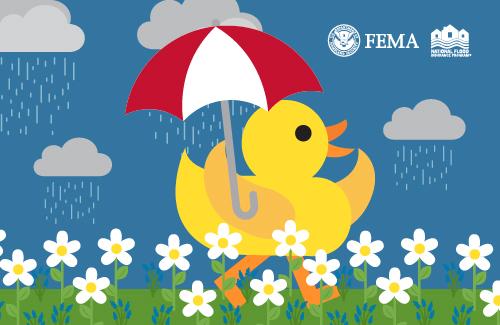Spring brings flood risks throughout the country, from heavy seasonal rains and rapid snowmelt to increased runoff in newly developed areas. Now is a smart time to protect your home, property and family from spring flood risk. Understand your risk, assess your coverage and prepare your home and family from a potential flood.
- Know Your Flood Risk: Visit the Flood Map Services Center to learn if you live, work, or travel in areas prone to flooding. Keep in mind that you don’t need to be in a high-risk area to experience flooding: About 40% of all National Flood Insurance Program (NFIP) claims come from areas outside high-risk zones.
- Avoid an Insurance Gap: Review your policy with your insurer to understand your current coverage and exclusions. Be aware that most homeowners and renters insurance does not cover flood damage, and FEMA disaster relief is designed to provide short-term support for recovery, not fully restore or replace your property. If you don’t have flood insurance, get a quote. If you have flood insurance, make sure your coverage accounts for any recent improvements and rising construction costs.
- Make or Update a Household Inventory: Take photos and videos of all major household items and valuables. Keep these and any receipts in a safe place to help in filing insurance claims. If you’ve recently acquired new furnishings, electronics or other valuables, add them to your inventory.
- Get SET to Help Protect Your Home:
- Store Important Documents: Save copies of birth certificates, passports, medical records, and insurance papers in a safe, dry place. Keep original documents in a watertight safe deposit box.
- Elevate and Anchor Utilities: Raise and fasten down utilities, including electrical panels, propane or oil tanks, sockets, wiring, appliances, and heating and air conditioning systems.
- Toss out Debris: Clear any debris from gutters, downspouts, and drains to avoid an accumulation of water.
- Make an Emergency Plan: Assemble emergency supplies (food, medicine, clothing, flashlights, etc.), set up a “go bag,” have an emergency communication plan, and map out evacuation routes.
For more preparation tips, visit floodsmart.gov

